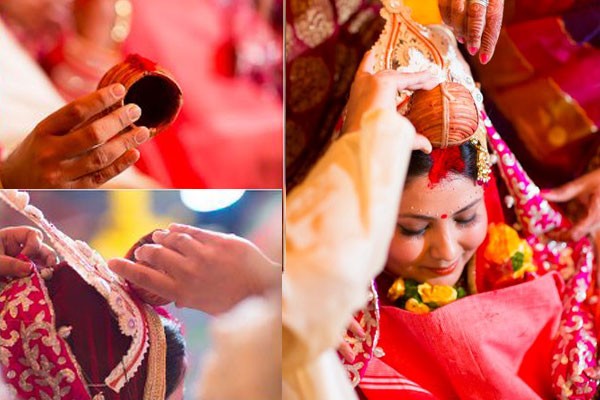
16 Bengali traditions that many doesn’t know
Bengali traditions have a wide horizon. There are numerous traditions that are evolving from social structure, lifestyle and place of origin or location. Some of them are well-known but there are many traditions which are unknown to the world.
1) Shukto
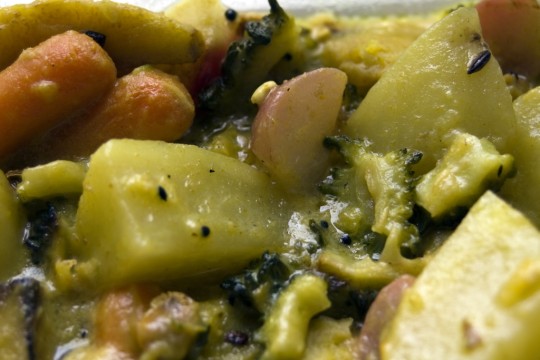
Image Source
This is basically a mixed vegetable platter. There was a time when ‘Shukto’ was mandatory for Bengali’s lunch. Vegetables like – Egg-plant, Bitter Gourd, Broad Beans, Ceylon spinach, Drumstick and Pumpkin are must for Shukto. This platter works well for digestion as it enhances the secretion in the liver.
2) Aalta
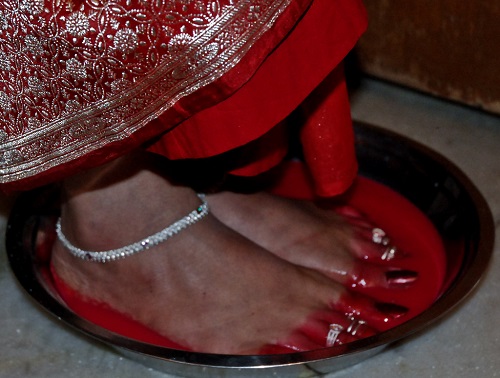
Image Source
Once a sign of Bengali Beauty this red colored liquid which Bengali women used to paint the outer border of their feet. This was mandatory for all the married women. It still exists in the villages and tire two cities of Bengal. One can also see the use of Aalta during Durgapuja or on the occasion of marriage.
3) Jonmodin e Payes (Rice Pudding on Birthday)
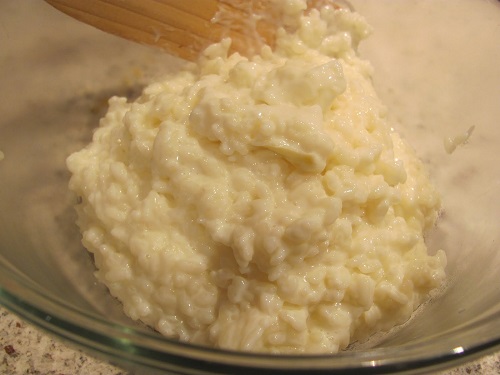
Image Source
The sweet dish made from milk, rice, and jiggery/sugar. Before the intrusion of Cake cutting in Birthday’s, Payes was a must for every birthday. Because, eating Payes on birthday is termed as auspicious.
4) Dorpon e Bisorjon (Mirror Immersion) – Immersion of Devi Durga.
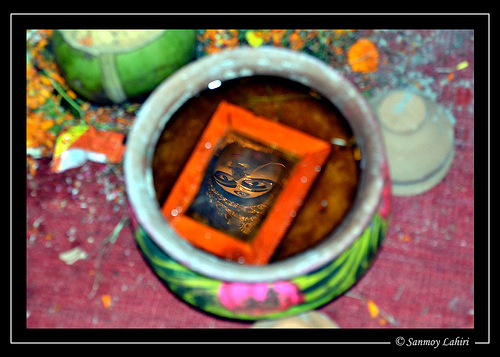
Image Source
This happens in the Morning o Dashami (Dussera) when the priest carefully placed a small mirror inside a water-filled earthen bowl. Position of the mirror would be such that it will show the reflection of Devi Durga’s image on the immersed mirror. With this people officially say adieu to Devi Durga.
5) Dudh uthlano (To Overflow Boiling milk)

Image Source
This tradition or ritual happens once newly married couple enters to a new house. Bride is asked to boil a pot of milk. If, the milk overflows the pot then it’s translated as auspicious. Because, happiness and peace will always overflow in the newly-weds family. Hardship will never knock the door.
6) Holding Fish
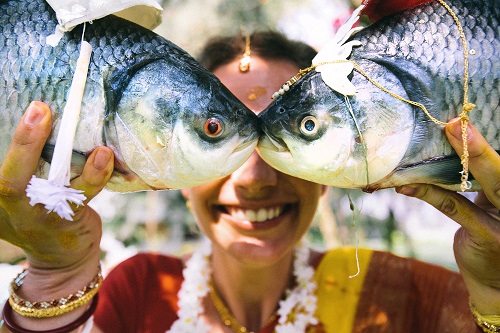
Image Source
Women this is for you and you only. Bengali tradition and culture respects woman’s authority and intelligence. This is a test of her power to control adverse situation. Newlywed bride is given a fish (slippery one mostly like Singi or Cat fish) to hold for a certain period. If the bride is able to hold the fish throughout the allotted time then it is concluded that she can run the family ably.
7) 14 shak (14 leafy green vegetable)
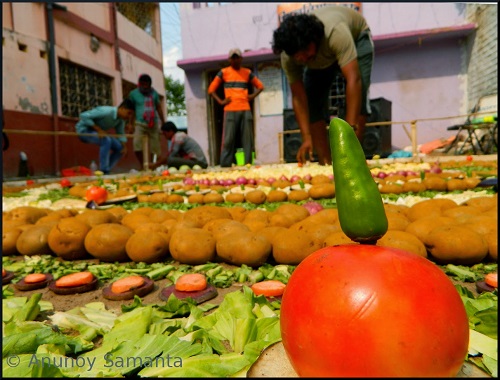
Image Source
A must for Bengali’s. 14 different types of leafy vegetables are cooked and eaten just the day before Kalipuja. Names of these 14 leafy vegetables are 1 = yam leaves, 2) baby chard 3) baby kale,4) spinach, 5 )lal shaak (red amaranth), 6) kolmi shaak, 7 ) shorshe shaak ( mustard green), 8 )pui shaak, 9 ) motor (pea), 10 ) kochu(Yam) shaak, 11) radish (mulo) shaak, 12) methi (fenugreek )shaak 13) paat shaak (jute leaves) 14)turnip greens
This tradition also bears a scientific reason. In autumn the weather changes suddenly, which may cause various infectious diseases. These herbs have the potential to prevent them.
8) Antur ghor
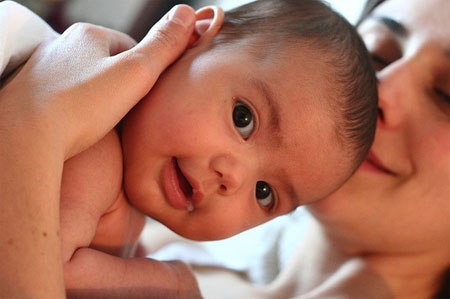
Image Source
In short maternity leave for the mother of new born. This happens after the child is born and comes back to home from hospital. Mother and child are allotted a special, clean room. Others members of the family take a great care to keep mother and child healthy and happy. If it is a boy then mother generally stays around 21 days and for girls it’s 30 days. Good way to show respect and love to the woman who binds the family together.
9) Aiburo bhat
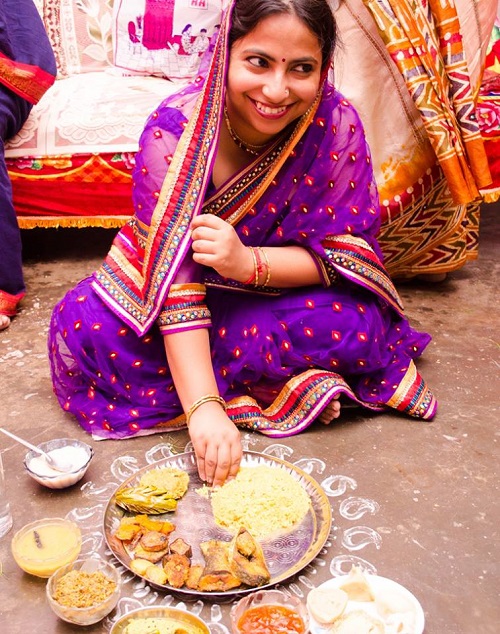
Image Source
Last meal before marriage. This tradition is applicable for both bachelors and spinsters. Unmarried girl or boy gets the invitation from their family friends to have their last lunch or dinner as an unmarried one. Well…
10) Ostomongola
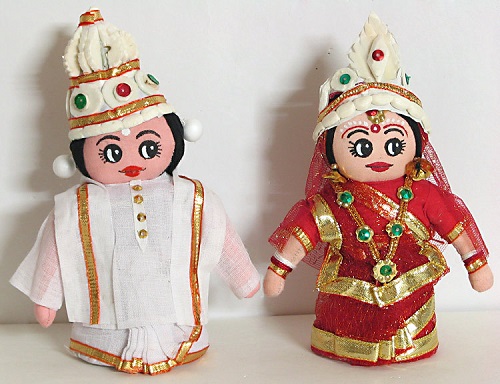
Image Source
This tradition is for the newly married couple. Eight days after the marriage (Osto means Eight in Pure Bengali, in Colloquial it is Aat) where the groom visits the bride home. In this way, girl doesn’t feel bad or out of the world after marriage. Also, the groom gets to know his in-laws better. At the end both daughter and parent are happy.
11) Ombubachi
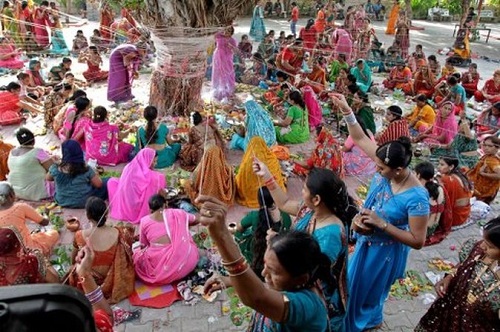
Image Source
This is an age old tradition for Bengali widows. Although the origin of the tradition flows from Assam where It is the celebration of the yearly menstruation course of goddess Kamakhya. But in earlier days where child marriage was a regular feature, the numbers of young widows were very high. So, they were attached this tradition. During this time they are allowed to eat only fruits, curd and flatten rice. This time they were not allowed to cook food.
12) Bhiksha Ma
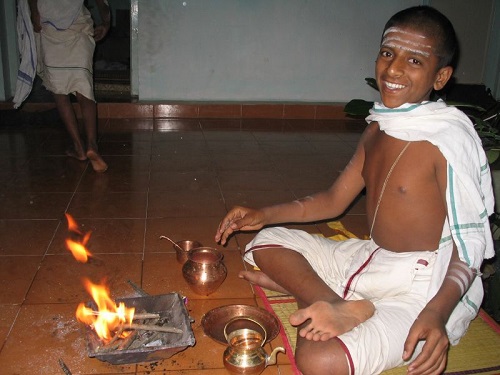
Image Source
This tradition happens during the sacred thread ceremony of a Bramhin boy. Once he transformed into a ‘Brahmin’ he will survive by donation from the family and neighbours. In short he will ask for alms to feed himself. BhiKsha ma is the lady who is not a ‘brahmin’ is given the preference over others to give the first alms to the new Brahmin boy. This tradition tries to mend the distance between casts.
13) Basanti Durga Puja
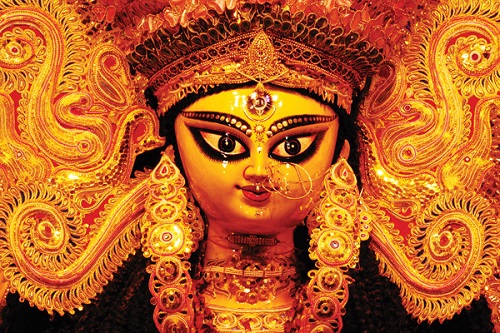
Image Source
According to the books and mythological history, this Durgapuja is the original Durga Puja. It is celebrated during the month of Chaitra in Bengali calendar which corresponds to March-April of English calendar. The name Basanti denotes the season of Spring (Bosonto in Bengali and Basant is the Hindi name of spring). Rituals of this Puja are same as Sharodyia Durgapuja celebrated in the Months of Ashwin or Kartik (September-October).
14) Tusu Puja
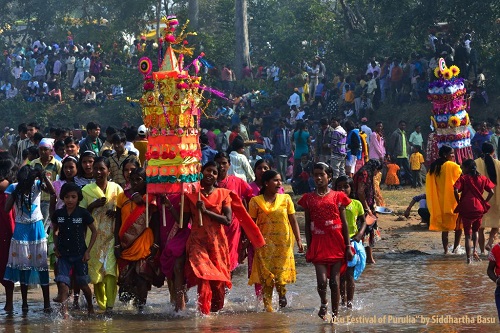
Image Source
Tusu is a religious festival of rural Bengal. This is the tradition to celebrate the good harvest season. In this traditional festival, the village girls and women sing Tusu songs during the month of Paush, the first month of winter. Women exchange garlands and fry eight varieties of pulses which are given as an offering to the goddess Tusu. Tusu songs are sung for whole night of ‘Makar Sankranti’, the last day of the month of Paush.
15) Bhadu Puja
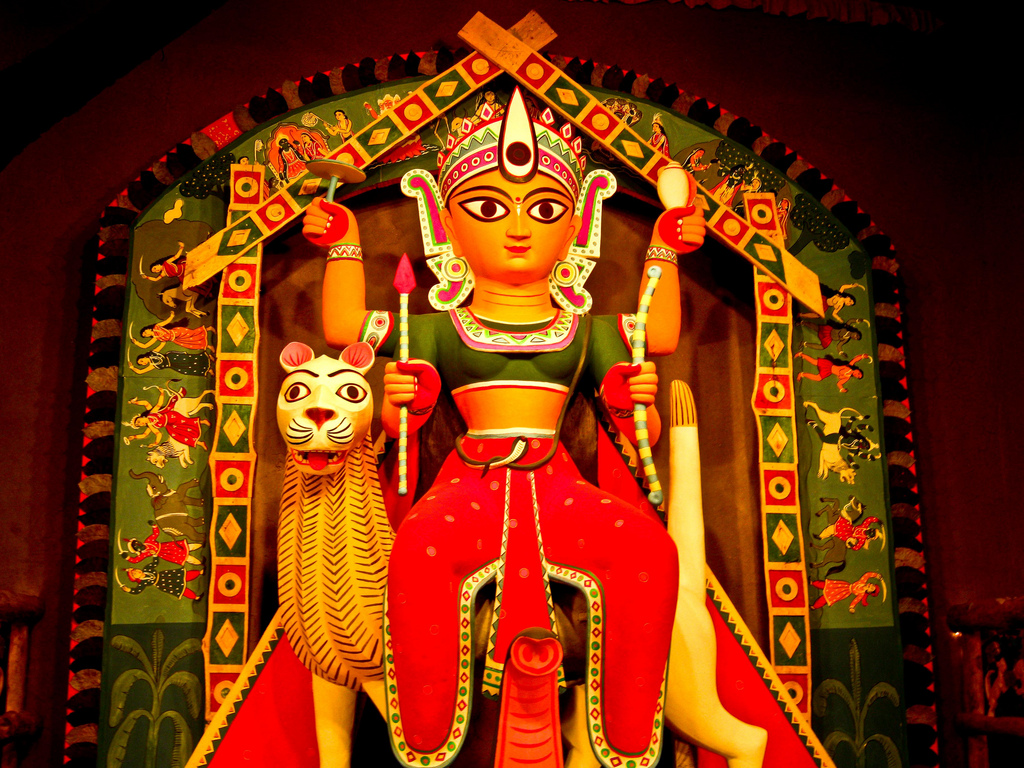
Image Source
The name Bhadu derives from the Bengali Month Bhadra ((mid-August-mid-September). Celebrated in the villagers of Purulia where people believe that worshipping Bhadu Devi enables childless women to bear children. Bhadu Songs are famous for celebrating this tradition.
16) Pithe Puli in the month of Poush
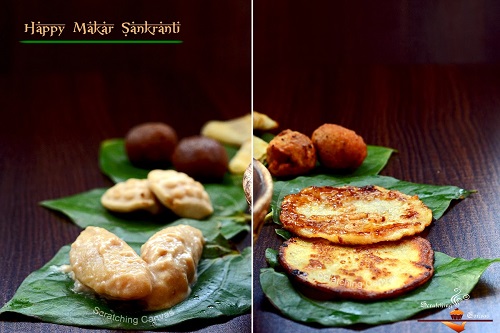
Image Source
Featured Image
This tradition happens during the month of Poush according to Bengali calendar (December -January). This tradition is all about making delicious sweet food items. All the sweets are made with rice powder, sugar, palm jiggery, sweet potato, and milk. In earlier days Bengali mother and married women used make at least 50 varieties of Pithe.
Bengalis are generally culturally sound and love their traditions. They enjoy their traditions and celebrate them happily.


